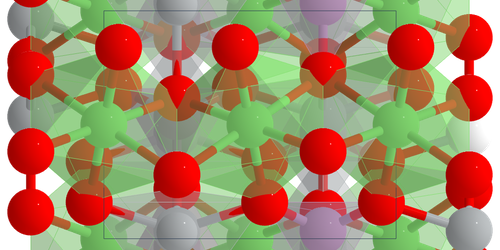A Large Optical-Diode Effect at Telecom Frequencies
A crystal can serve as an optical diode—that is, a turnstile for light—if it transmits light only in one direction. Several materials work as optical diodes for visible light, but finding one that works for the near infrared (IR) wavelengths used in telecommunications has proved challenging. Now Kenta Kimura of Osaka Metropolitan University and Tsuyoshi Kimura of the University of Tokyo demonstrate a strong near-IR optical-diode effect (ODE) for lithium nickel phosphate (LiNiPO4) [1]. The observed ODE is reversable, which Kimura and Kimura say opens a pathway to achieving nonvolatile switchable one-way transparency.
The unit cell of LiNiPO4 features four nickel ions, each of which is surrounded by six oxygen ions. Below a temperature of 20.8 K, the spins of two of the nickel ions point in one direction, and the spins of the other two point in the opposite direction, breaking space- and time-reversal symmetries, a requirement for a strong ODE. A strong ODE also requires that the electric- and magnetic-dipole transitions of the system be close enough in strength that, when light excites these transitions, mutual interference cancels them both out. Thanks to the broken symmetries, the cancellation—and with it the transmission of light—occurs in one direction but not in the opposite one.
Kimura and Kimura recognized that nickel’s electronic- and magnetic-dipole transitions are close and lie in the near IR. They grew crystals of LiNiPO4 and found that absorption along one crystal axis was up to 2.3 times higher in one direction than in the other. The ODE was present for wavelengths of 1410 nm up to at least 1690 nm. Applying an external magnetic field flipped the spins and reversed the ODE, an effect that was both reversible and repeatable.
–Charles Day
Charles Day is a Senior Editor for Physics Magazine.
References
- K. Kimura and T. Kimura, “Nonvolatile switching of large nonreciprocal optical absorption at shortwave infrared wavelengths,” Phys. Rev. Lett. 132, 036901 (2024).




